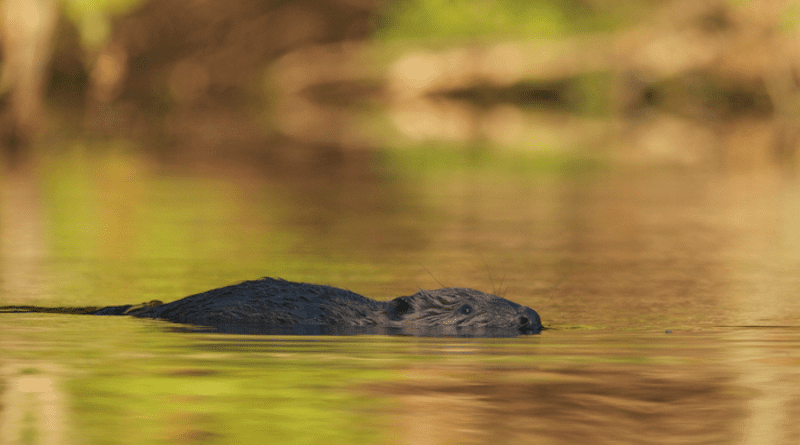Beavers Benefit Fish By Building Dams In Scottish Rivers
Modification of river habitat by Eurasian beavers helps fish in small upland streams, according to a new study led by the University of Southampton.
The research shows that by building dams in shallow streams, the beavers create deeper pools that increase availability of suitable habitat and abundance of food – benefiting brown trout, which are a commercially and ecologically important species.
As a result of beaver activity, the trout tended to be larger, having grown well throughout the year, with the largest and most mature fish, that are of greatest interest to fishermen, being much more abundant. In beaver modified habitat, the trout also benefit from the provision of sanctuary from predators.
The research, conducted by scientists at the University of Southampton, and published in the Canadian Journal of Fisheries and Aquatic Sciences, monitored the fish that inhabited two Scottish streams in Inverness-shire that flow into the same loch. One stream was modified by beaver activity through the construction of five dams, while the other was left unaltered, providing a unique opportunity to compare the influence of beaver habitat modification on fish.
PhD student Robert Needham, from the International Centre for Ecohydraulics Research at Southampton, explained: “There has been a great deal of concern about the possibility of beaver dams blocking the upstream and downstream migration of Atlantic salmon and trout as they move to and from their spawning grounds, as well as impacting habitat quality. This study explored how brown trout respond to beaver activity.”
Beavers were once common throughout the UK until they were hunted to extinction around the 16th Century. As is the case in many countries in Europe, beavers have recently been reintroduced to the UK, with the first trial reintroduction taking place in Scotland in 2009. Today they are once again considered a natural component of the Scottish fauna and are now protected. However, as they have been absent from the UK landscape for so long, there is a paucity of data on how they may affect other fauna and flora, including economically important freshwater fish.
Professor Paul Kemp from the University of Southampton, the project lead, said: “This is the first published research of its kind conducted in the UK. Most of our understanding of beaver-fish interactions is based on North American studies which involves a different species of beaver, and different species of fish. The results of this study are important because it is hoped that they will allay fears expressed by some representatives of fisheries interests that beavers may be damaging to fish stocks.”
The project was conducted in collaboration with the Game and Wildlife Conservation Trust (GWCT), the Salmon and Trout Conservation, and NatureScot. The findings are important because reintroductions and natural recolonisation’s are gaining pace in Scotland, England and Wales.
Dylan Roberts, Head of GWCT Fisheries, said ‘We welcome the results of this much needed UK based published work to inform what is currently a very topical debate. The fact that numbers of larger trout responded positively to pools created by the beavers is good news. However, there is still much to learn to see if their dams impede the upstream migration of adult salmon and trout on their way to spawning grounds and the downstream migration of juvenile fish.”
Dr Martin Gaywood, NatureScot’s Species Projects Manager, said: “We continue to work with stakeholders, including fishery groups, to identify the many complex ways beaver interact with our environment, make the most of the many benefits beavers can bring to nature and us, and explore ways to mitigate problems when necessary. This research is an important contribution to this process.”

